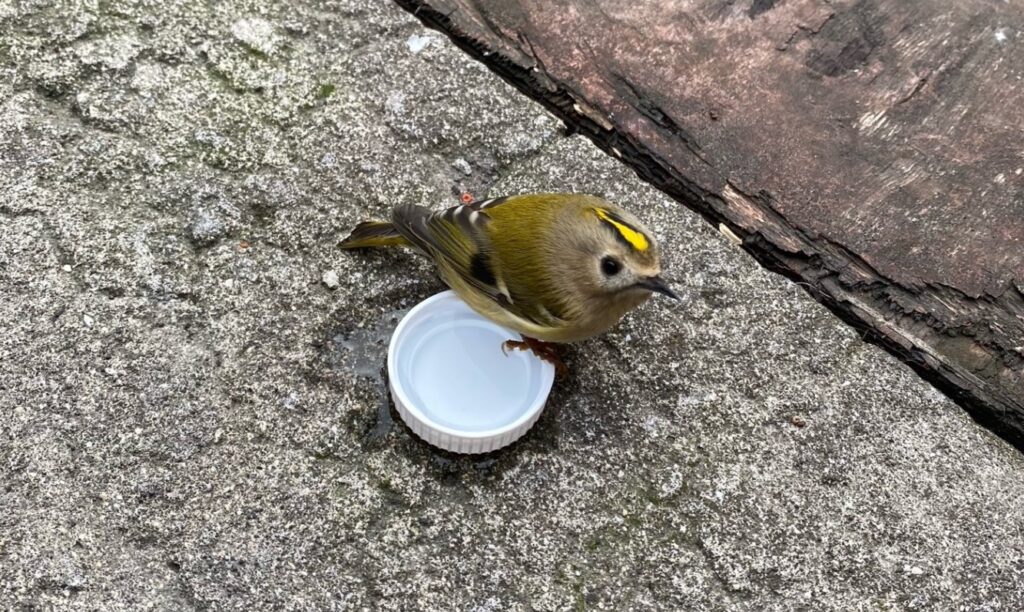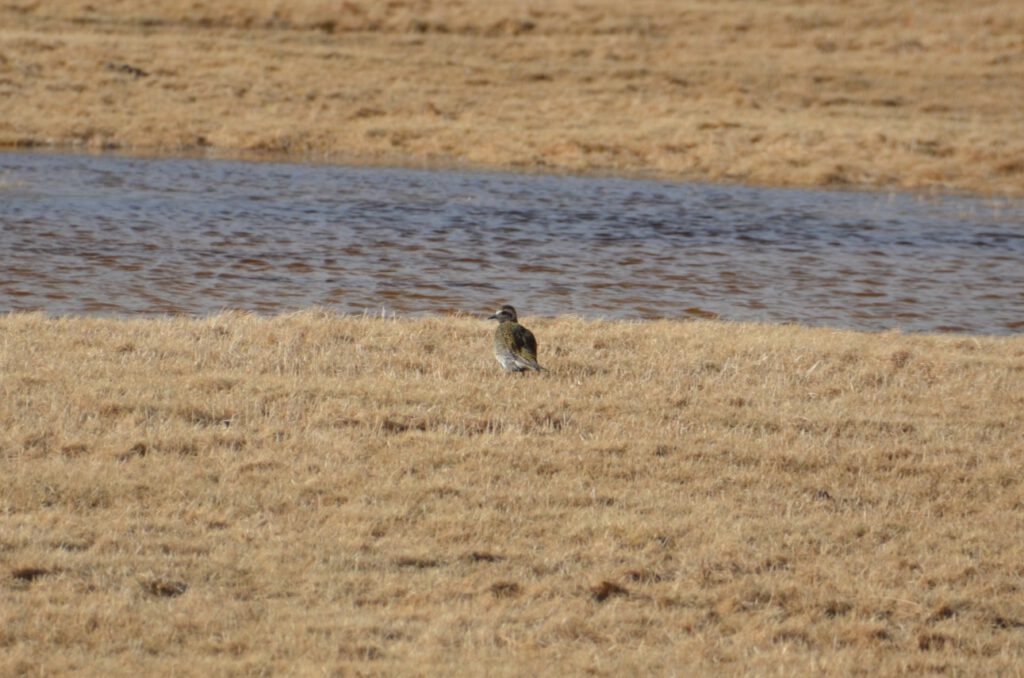
Black guillemot surveys on Vigur and Æðey
In the first two weeks of May, Náttúrustofa Vestfjarða completed its third annual survey of the black guillemot (Cepphus grylle) colony on Vigur Island. This year, the island of Æðey was also added to this monitoring program, which commenced in 2022.
A total of four counts on Vigur, and two counts on Æðey, were completed. During the pre-egg-laying period, black guillemots gather closely at their breeding grounds at dusk and dawn and engage in social activities with other members of the colony. The display of hundreds of whistling, diving, chasing, and splashing guillemots is remarkable to behold and provides an opportune occasion for counting.

Vigur continues to hold what is likely the biggest breeding colony of black guillemots in Iceland, with a maximum of 779 pairs counted this year. While this number has slightly decreased from the previous year (835), this could be due to natural variation in the attendance of the birds, as their presence is known to change based on weather, timing of tides, the time of sunrise and sunset, and so on. Slight yearly fluctuations are expected in this long-term monitoring program. Over multiple years, however, it will be revealed if this population is stable, increasing, or declining.
Æðey also revealed a significant number of black guillemots, with around 667 pairs. The most recently published numbers regarding the breeding population for this island date back to the year 2000, with an estimated 500 pairs. It goes without saying that Ísafjarðardjúp is extremely important for black guillemots in Iceland, hosting these two islands with large breeding populations. This species is listed as endangered in Iceland due to significant declines around the country over the past decades.





We thank the residents of Vigur Island (Gísli Jónsson, Felicity Aston, and Þráinn Freyr) and Æðey (Alexíus Jónasson) for welcoming us to their islands to conduct these counts.
– Ingrid Bobeková
Read More
Goldcrest sighted again in Ísafjörður
A Goldcrest (Regulus regulus) sighting in Ísafjörður (near Jónsgarður) has once again been reported to Náttúrustofa Vestfjarða, September 20. A previous sighting from the same individual was on March 22 of the same year. This tiny passerine is not common in the Westfjords and is found in small numbers around the rest of the country since a breeding population had settled in Iceland in the 1990’s. Goldcrests prefer coniferous and mixed forests but can also be found in gardens and parks with large trees. They feed mainly on insects on tree foliage and branches. During winter, goldcrests eat seeds and insects from the ground.
Both reported sightings were the result of a window collision. The bird flew away after a brief recovery period. There are measures which can be taken to reduce bird-window collisions, which are often deadly even if the bird seems to have recovered initially. We encourage people to read these articles by Fuglavernd, The Cornell Lab of Ornithology or National Audubon Society for ideas about how to make their windows more visible to reduce collision risk to our feathered neighbors, as well as actions to take if encountered with a collided bird.
We thank Annska for once again sharing the sighting with us. Náttúrustofa encourages reporting sightings of Goldcrests in order to help monitor their distribution and abundance in Iceland.

Black Guillemot Count on Vigur Island
The staff of Náttúrustofa Vestfjarða made two visits to Vigur Island (May 3-4 and 10-11) to conduct a population count of black guillemots (Cepphus grylle). Vigur Island is believed to host the largest breeding population of these birds in Iceland, making it crucial to better understand and monitor their numbers over the years.
During the pre-breeding and breeding season, black guillemots gather in flocks in the morning and evening close to the shore of their nesting island and display social and mating behaviours. These assemblies, prior to egg laying, are the best time to count the population. A total of 4 counts were completed in the late evening and following early morning of each visit, as there can be fluctuations each day in the number of guillemots assembling driven by various environmental factors. Over the 4 days, the count results were 1,395, 1,671, 731, and 1,526 black guillemots gathering around the shore of Vigur Island.
Black guillemots (Cepphus grylle) gathering to display social and mating behaviour around the shores and beach of Vigur Island.
Other bird life was teeming on the island, including a large colony of common eider ducks (Somateria mollissima) and many thousands of Atlantic puffins (Fratercula arctica). Several nests of oystercatchers (Haematopus ostralegus), greylag geese (Anser anser), redshank (Tringa totanus), and eider ducks were already spotted. A white-tailed eagle (Haliaeetus albicilla) was observed flying around the island on both visits, as well as one-time sightings of a pair of arctic skuas (Stercorarius parasiticus), a gyrfalcon (Falco rusticolus), a flock of red knots (Calidris canutus), and a king eider (Somateria spectabilis) were of note. The second visit coincided with the arrival of Arctic terns (Sterna paradisaea) which breed on the island.
Vigur Island serves as a vital habitat for various bird species and wildlife, including seals. We thank the residents for their generous hospitality and support during our work there.
A full report about the black guillemot project will be published later this year.
Read More
Náttúrustofa Vestfjarða Annual Report 2022
The 2022 annual report for Náttúrustofa Vestfjarða is now published. In the report you can see descriptions of the projects that were carried out at NAVE last year and you can read it at: https://en.nave.is/wp-content/uploads/2023/02/Arsskyrsla-2022_minnkud.pdf
The working year of 2022 was diverse, and various projects were carried out both as a part of research grants and as commissioned work. A large grant was received for a project monitoring sea louse on wild salmonids, and another grant for a comparative study on benthic fauna 10 years after the commencement of aquaculture. Several projects were carried out in the field of ornithological research in the Westfjords; work began on the monitoring of two Arctic tern colonies, black guillemots were counted in Vigur Island, and 10 wading bird surveys were completed. Vegetation monitoring began and fossils were recorded in connection to the Monitoring Key Elements in Icelandic Nature program. Investigations in relation to the road construction from Bjarkalundur to Skálanes in Reykhólahreppur remained a large focus in 2022, and several reports were published in connection with the project, both on research into the biosphere and archaeological remains. Additionally, a report was published on research related to plans for a power plant at the bottom of Dýrafjörður and as well as on planned projects for flood protection at Bíldudal. Further, research was carried out in relation to fish farming, and various studies were carried out on archaeological remains in relation to road construction, planning and forestry.
Read More
Spring is arriving!
A golden plover (Pluvialis apricaria) was sighted in the southern Westfjords mid-day last Sunday April 2, by Cristian Gallo. It was a welcome sight, for it is said in Icelandic folklore that the arrival of this wading bird marks the beginning of spring. The golden plover spends its winter in western and southern Europe, and as far south as Morocco. In the summer, approximately half of the world´s populations of golden plovers breed in Iceland, making this country´s heathlands a significantly important habitat from the species.

